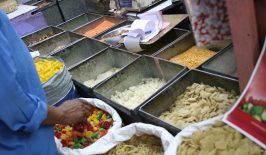A new affordable, climate-change-resisting greenhouse could help strengthen rural Indian farmers’ defences against extreme weather conditions.
When farmers in rural India sow their seeds, there is no guarantee they’ll be harvesting them, with extreme weather conditions – exacerbated by climate change – frequently threatening their crops and livelihoods.
Traditionally, farmers in the central Indian state of Telangara have relied upon the seasonal rains to keep their plants healthy in a region frequently hit with droughts and water shortages. However, in more recent years, the rains have been just as much a liability as a blessing, with heavy storms damaging crops and destroying entire harvests. These kind of extreme and variable weather conditions can financially ruin small farmers, with some even drawing links between the difficult conditions Indian farmers are facing and the dramatic increase in suicides.
A Greener Greenhouse
Kheyti, an India-based non-profit recently profiled by National Geographic, is hoping to assist small farmers in the region with a new type of greenhouse that can fortify crops against harsher weather conditions. Developed in conjunction with Stanford University and Northwestern University’s Institute for Sustainability and Energy, Kheyti’s greenhouse uses a new aluminum-coated cloth material which allows the structure to breathe, reducing interior temperatures and protecting crops against heatwaves and drought.
Additionally, the greenhouse employs a drip-irrigation system, which dramatically reduces water-usage by as much as ninety per cent, while the structure has been stress tested to ensure it can withstand Telangana’s volatile rainy seasons, as well as the invasion of insects they bring.
Kheyti’s greenhouses have also been developed with smaller farmers specifically in mind. Larger, traditional glasshouses generally cost somewhere in the region of 30,000 USD, placing them far outside the budgets of most small holding growers. Kheyti’s greenhouse only costs 2,500 USD, with the organization also working with banks to help farmers receive loans.
Small Greenhouse, Big Impact
A social element is also central to Kheyti’s approach, with the organisation developing community support networks across the region, as well as providing one-on-one training, support and logistical assistance – especially for single women farm owners. Since the success of their first solo female farm owner, the programme has been widened, providing an income, self-reliance and social mobility to more women in the region. The increased income derived from the greenhouses is also often used by farmers with families to help fund their children’s education.
Of course, although highly successful, Kheyti’s greenhouses are likely only a temporary solution for India’s rural farmers. Meaningful long term protection for Telangara’s small farmers can only likely come from major international efforts to curb climate change as well as a changes to how the agriculture industry is structured.









